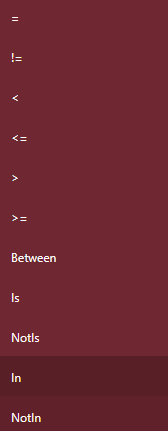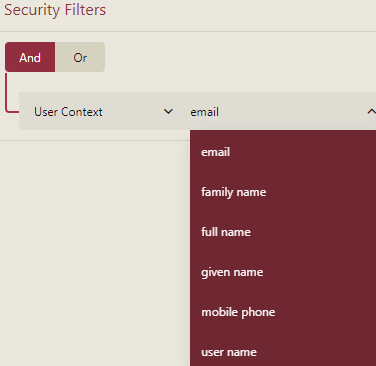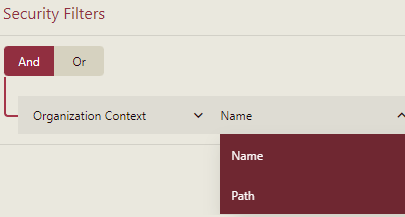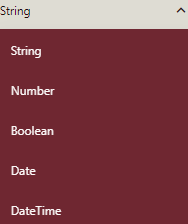- Getting Started
- Administration Guide
-
User Guide
- An Introduction to Wyn Enterprise
- Document Portal for End Users
- Data Governance and Modeling
- Working with Resources
- Working with Reports
- Working with Dashboards
- View and Manage Documents
- Understanding Wyn Analytical Expressions
- Section 508 Compliance
- Subscribe to RSS Feed for Wyn Builds Site
- Developer Guide
Add Security Filters on Push Dataset
You can configure multiple security filters for the push dataset and filter the items based on the contexts in a multi-tenant environment. To add the security filters, follow the steps given below.
On the Push Dataset Designer, click the Security Filters tab. The configuration of Groups and Rules is displayed. These configurations have conditions like AND, and OR.

Now add the security filters.
In this example, we will add 3 Rules in a Group.
Click the Add Group button.

A group will be added with the option to add more groups or rules as shown below.

By default, a rule with And condition is added. You can modify the rule. In this example, we have added three rules with And conditions in this group as shown below.

Once the data set is saved, you can use this dataset to create a dashboard and the dashboard will display the filtered data, based on the security filters applied in this dataset.

Note: In this, we have added one user context filter Color. The custom properties are added through the Admin portal and these custom properties automatically get added to the User Context interface and displayed here.
Structure of Security Filters
Left Type
Operator
User Context
Organization Context
Data Type





Group and Rules Conditions
You can configure Groups and Rules, using 'AND' or 'OR' conditions.
Each Rule contains the following: Left Type, Left Value, Data Type, Operator, Right Type, and Right Value.
Left Type value options: Field, User Context, Organization Context.
When the Left Type option selected is Context, the Left Value is a single-valued Context Value.
Data Type value options: String, Number, Boolean, Date, DateTime.
When the Left Type is Field, the Data Type is not allowed to be modified and the value of the Data Type is the Data Type of the selected Field.
The optional Operator values corresponding to the Data Type are listed in the following table:
Data Type
Optional Operator
String
=, !=, StartsWith, NotStartsWith, EndsWith, NotEndsWith, Contains, NotContains, Is, NotIs, In, NotIn.
Number
=, !=, <, <=, >, >=, Between, Is, NotIs, In, NotIn.
Boolean
=, !=, Is, NotIs.
Date
=, !=, <, <=, >, >=, Between, Is, NotIs.
DateTime
=, !=, <, <=, >, >=, Between, Is, NotIs.
Right Type value options: User Context, Organization Context, Constant.
A few important points to be considered while adding the data security
When the Operator is Between, the Right Value is two values, when the Operator is In and NotIn, the Right Value is multi-valued, and in the rest cases, the Right Value is single valued.
When the Add rule/group button is clicked, the default add rule for the first field is equal to a Constant.
The configuration of Rule should be configured from left to right, and modifying the left value will restore the default value to the right.
When a Field is deleted, the Security Filter that uses the Field is automatically deleted. Modifying the Field automatically synchronizes the Field Name and Field Type to Security Filters.
When the Add Group button is clicked, an AND Group is added, and a default Rule is added.
When all Rules and Groups in a Group are deleted, the Group is deleted, and the root Group is not deleted.
The depth of the Group is capped at 20.